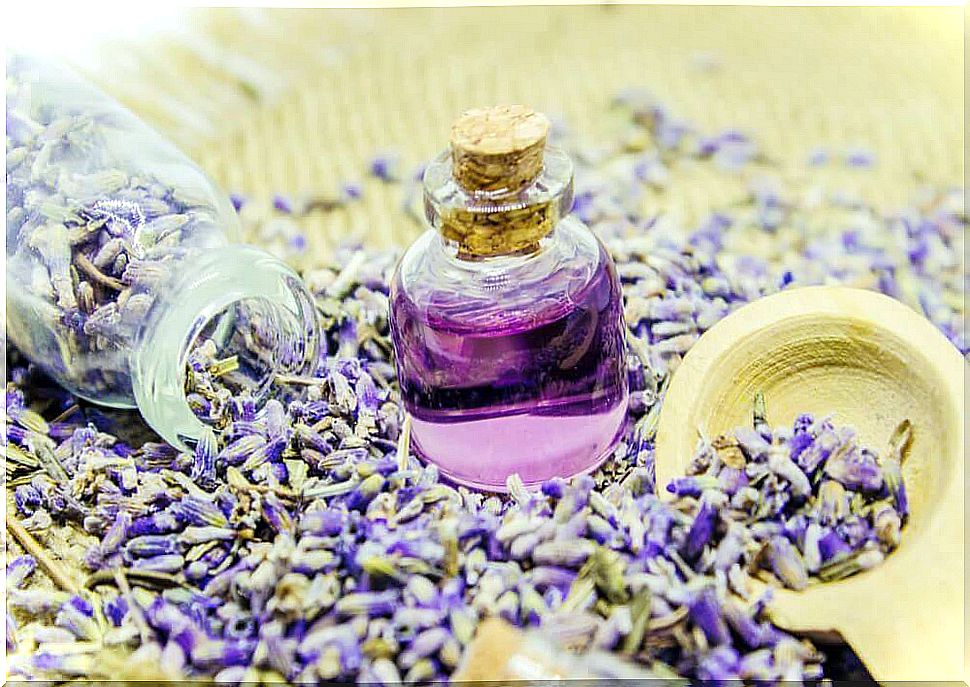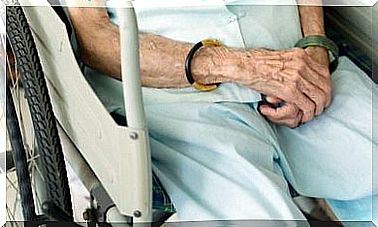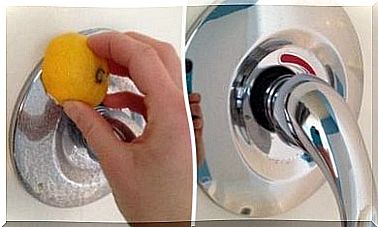Production And Use Of Essential Lavender Oil
Lavender is a typical plant with lilac-colored and intensely colored flowers. An essential oil is extracted from them that is rich in linalol, geraniol, linalin, saponins, and borneol, which can be of great benefit.

Lavender essential oil is particularly known in aromatherapy and is used in soothing teas and bath products. You can also work antimicrobial with lavender oil to kill fungi. Find out how to use it today!
Lavender oil is a product that has become popular in cosmetics and natural medicine because of its interesting uses. It’s also very popular in aromatherapy. Did you know you can do it yourself at home?
Although lavender oil can be purchased at herbal stores, drug stores, and pharmacies these days , many people prefer to prepare it at home to get the most out of the plant. That is why we explain below how it can be obtained and its main uses.
Features of lavender
Lavender is typically a plant with purple, showy flowers. These are used to produce an essential oil that is rich in linalol, geraniol, linalin, saponins and borneol. This makes it indispensable in cosmetics and traditional natural medicine.
According to information from phytotherapy research, it has anti-inflammatory, antiseptic, carminative, antifungal, and sedative properties, although the studies are not entirely conclusive. So it can even be useful for burns and insect bites.
According to farmers, lavender should be harvested in grapes at the beginning of the flowering period. They can be dried in a cool, dark room until processed.
materials
- Dried lavender flowers.
Olive or sunflower oil.
1 small glass bottle.
manual
Put the lavender flowers in the jar, add the oil and let it soak in the sun for 3 days.
After this time, shake the contents and pour them into another glass with a fine sieve or coffee filter – and that’s it!
Important note : Remember that essential oils should never be consumed. Test your sensitivity by placing a few drops of the product on a cotton ball and dabbing it on your forearm. If there is a reaction, avoid using it.
How do you use lavender oil?
The uses of lavender oil are diverse, as it is often used against skin problems, anxiety and certain ailments. However, it is important to remember that it is not a remedy to replace the treatments prescribed by the doctor and should be used under the supervision of a professional whenever possible.
Accelerated wound healing
Research published as part of BMC Complementary and Alternative Medicine has confirmed the benefits of lavender oil for the healing process of the skin.
According to the results, topical application of this product helps in the synthesis of collagen and differentiation of fibroblasts, which improves rapid wound healing.
For the hair
Topical application of lavender oil in combination with other essential oils can be used to treat hair loss.
In a study published in the Archives of Dermatology, people applied a blend of lavender, thyme, rosemary, and cedarwood essential oils to their hair over a period of 7 months. The result was hair regeneration and reduced hair loss.
Against fear

As a Mental Health Clinician publication points out, lavender essential oil has an extensive anecdotal history of its anxiolytic benefits, which is currently supported by multiple clinical studies.
According to this text, this essential oil exhibits many of the properties of an anxiolytic, including a calming effect without sedation. Hence, it turns out to be a good addition for those with anxiety disorders.
However, given the lack of studies on dosage and safety, it should be used with caution.
Against the pain
Topical application of lavender essential oil is beneficial for the relief of some common ailments. For example, research published in the Journal of Alternative and Complementary Medicine has found that when combined with sage and roses, it can relieve menstrual cramps.
Finally
Remember to avoid using pure essential oil on your skin. If the properties are to be used as a complementary treatment, dilute it in water or mix it with a carrier oil such as almond or olive oil. You can also dilute it with water if you plan to take a foot bath.
Also, keep in mind that there is limited knowledge about lavender oil and its safe use has not been established. Therefore, it should be used with caution to complement conventional treatment.









